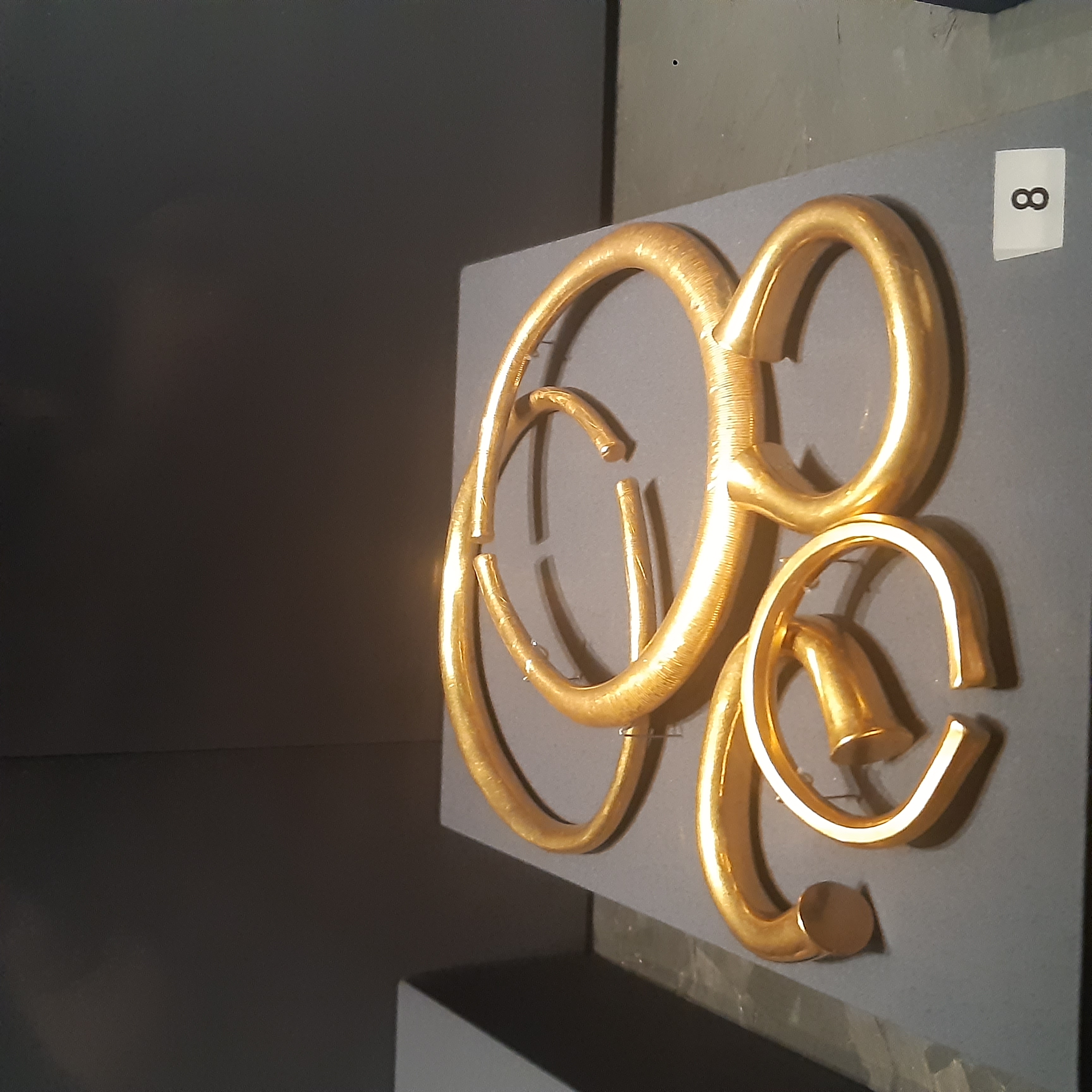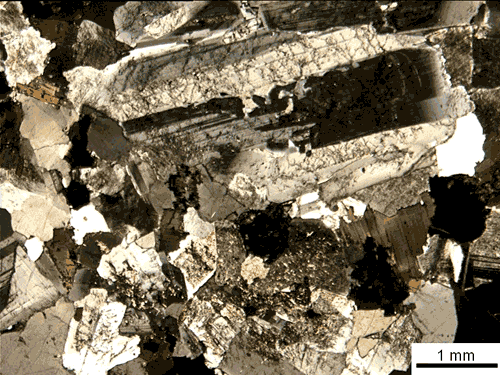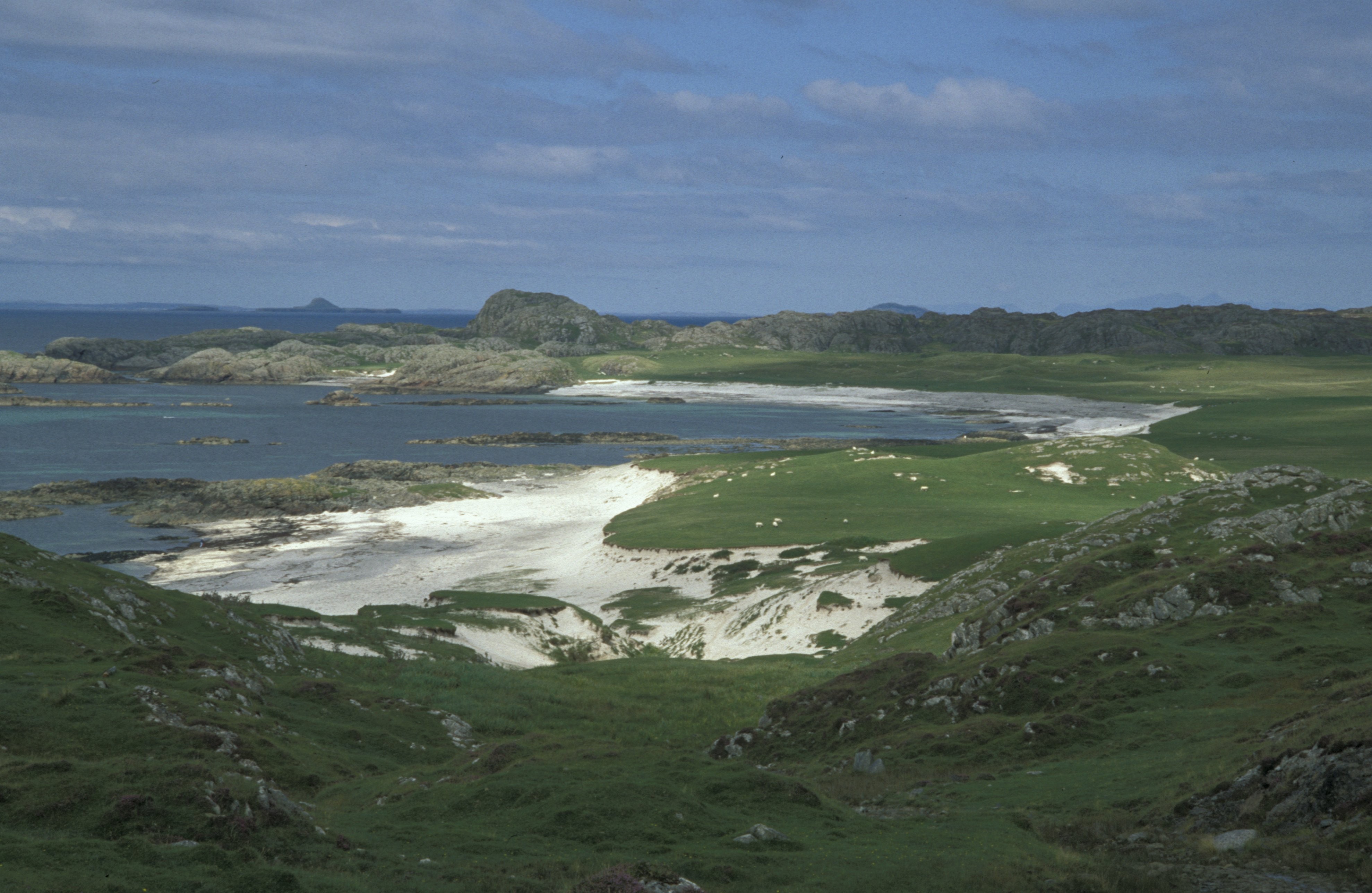|
Ronald Rae
Ronald Rae is a Scottish sculptor born in Ayr, Scotland, in 1946. His works are entirely hand-carved in granite. He has over fifty outdoor granite sculptures in public and private collections throughout the UK. His largest work to date is the 20 tonne '' Lion of Scotland''. Solo exhibitions include Regent's Park, London (1999–2002) and Holyrood Park, Edinburgh. (2006–2007) Collections Public works include ''Widow Woman'', purchased for the permanent collection of the Jerwood Foundation. In April 2009, Rae's eight-tonne sculpture ''Fish'' was installed on the waterfront at Cramond after a successful fundraising campaign by the Cramond Community. The sculpture was carved from a 460 million-year-old granite stone in the grounds of Cramond Kirk over a period of eight months. In February 2008, the sculpture ''Fallen Christ'' was sited outside the MacLeod Centre on the island of Iona and dedicated to the memory of Jim Hughes a member of the Iona Community. Other granite sculptu ... [...More Info...] [...Related Items...] OR: [Wikipedia] [Google] [Baidu] |
Sculpture
Sculpture is the branch of the visual arts that operates in three dimensions. Sculpture is the three-dimensional art work which is physically presented in the dimensions of height, width and depth. It is one of the plastic arts. Durable sculptural processes originally used carving (the removal of material) and modelling (the addition of material, as clay), in stone, metal, ceramic art, ceramics, wood and other materials but, since Modernism, there has been an almost complete freedom of materials and process. A wide variety of materials may be worked by removal such as carving, assembled by welding or modelling, or Molding (process), moulded or Casting, cast. Sculpture in stone survives far better than works of art in perishable materials, and often represents the majority of the surviving works (other than pottery) from ancient cultures, though conversely traditions of sculpture in wood may have vanished almost entirely. However, most ancient sculpture was brightly painted, ... [...More Info...] [...Related Items...] OR: [Wikipedia] [Google] [Baidu] |
Alloway
Alloway ( gd, Allmhaigh, ) is a village in South Ayrshire South Ayrshire ( sco, Sooth Ayrshire; gd, Siorrachd Àir a Deas, ) is one of thirty-two council areas of Scotland, covering the southern part of Ayrshire. It borders onto Dumfries and Galloway, East Ayrshire and North Ayrshire. On 30 June 2 ..., Scotland, located on the River Doon. It is best known as the birthplace of Robert Burns and the setting for his poem Tam o' Shanter (Burns poem), "Tam o' Shanter". Tobias Bachope, the mason responsible for the construction of Hopetoun House, Craigiehall, and Kinross House, also hailed from Alloway. Some historic parts of the village make up a Conservation area (United Kingdom), conservation area. The village and surrounding areas were incorporated into the Royal Burgh of Ayr in 1935, and the extended village is now a suburb of Ayr. Robert Burns The birthplace of Robert Burns, known as "Burns Cottage", is located in Alloway, now adjacent to a museum containing original man ... [...More Info...] [...Related Items...] OR: [Wikipedia] [Google] [Baidu] |
British Sculptors
British may refer to: Peoples, culture, and language * British people, nationals or natives of the United Kingdom, British Overseas Territories, and Crown Dependencies. ** Britishness, the British identity and common culture * British English, the English language as spoken and written in the United Kingdom or, more broadly, throughout the British Isles * Celtic Britons, an ancient ethno-linguistic group * Brittonic languages, a branch of the Insular Celtic language family (formerly called British) ** Common Brittonic, an ancient language Other uses *''Brit(ish)'', a 2018 memoir by Afua Hirsch *People or things associated with: ** Great Britain, an island ** United Kingdom, a sovereign state ** Kingdom of Great Britain (1707–1800) ** United Kingdom of Great Britain and Ireland (1801–1922) See also * Terminology of the British Isles * Alternative names for the British * English (other) * Britannic (other) * British Isles * Brit (other) * Bri ... [...More Info...] [...Related Items...] OR: [Wikipedia] [Google] [Baidu] |
1946 Births
Events January * January 6 - The first general election ever in Vietnam is held. * January 7 – The Allies recognize the Austrian republic with its 1937 borders, and divide the country into four occupation zones. * January 10 ** The first meeting of the United Nations is held, at Methodist Central Hall Westminster in London. ** ''Project Diana'' bounces radar waves off the Moon, measuring the exact distance between the Earth and the Moon, and proves that communication is possible between Earth and outer space, effectively opening the Space Age. * January 11 - Enver Hoxha declares the People's Republic of Albania, with himself as prime minister. * January 16 – Charles de Gaulle resigns as head of the French provisional government. * January 17 - The United Nations Security Council holds its first session, at Church House, Westminster in London. * January 19 ** The Bell XS-1 is test flown for the first time (unpowered), with Bell's chief test pilot Jack Woolams at the c ... [...More Info...] [...Related Items...] OR: [Wikipedia] [Google] [Baidu] |
Yorkshire Sculpture Park
The Yorkshire Sculpture Park (YSP) is an art gallery, with both open-air and indoor exhibition spaces, in West Bretton, Wakefield, in West Yorkshire, England. It shows work by British and international artists, including Henry Moore and Barbara Hepworth. The sculpture park occupies the parkland of Bretton Hall. History The Yorkshire Sculpture Park, opened in 1977, was the UK's first sculpture park based on the temporary open air exhibitions organised in London parks from the 1940s to 1970s by the Arts Council and London County Council (and later Greater London Council). The 'gallery without walls' has a changing exhibition programme, rather than permanent display as seen in other UK sculpture parks such as Grizedale Forest. Exhibition spaces YSP has a number of areas where its collection is displayed. Parkland The park is situated in the grounds of Bretton Hall, an 18th-century estate which was a family home until the mid-20th century when it became Bretton Hall Coll ... [...More Info...] [...Related Items...] OR: [Wikipedia] [Google] [Baidu] |
Jon Edgar
Jon Edgar is a British sculptor of the Frink School. Improvisation is an important part of his reductive working process and developed from the additive working process of Alan Thornhill. Final works are often autobiographical, perhaps referencing anxieties or pre-occupations at the time. His body of work includes many clay portrait sketches of eminent sitters. Biography Born 1968 in Rustington, West Sussex, the grandson of animator Brian White. He studied at both Exeter University and University of London before attending the former Frink School of Figurative Sculpture for two years from 2000, being awarded The Discerning Eye national bursary for his studies. The ''Environment Triptych'' (2008) features portraits of the independent scientist James Lovelock (who sat in Devon in 2007), moral philosopher Mary Midgley (sitting in Newcastle in 2006) and writer Richard Mabey (sitting in Norfolk in 2007). Entrepreneur and co-founder of Cass Sculpture Foundation Wilfred Cass sat a ... [...More Info...] [...Related Items...] OR: [Wikipedia] [Google] [Baidu] |
St John's Church, Edinburgh
The Church of St John the Evangelist is a Scottish Episcopal church in the centre of Edinburgh, Scotland. It is sited at the west end of Princes Street at its junction with Lothian Road, and is protected as a category A listed building. Background The church was dedicated as St John's Chapel on Maundy Thursday 1818 with construction having begun in 1816. It was designed by the architect William Burn the previous year, at the age of only 25. The congregation had begun in 1792 when Daniel Sandford came to Edinburgh to minister on Church of England lines. In 1797 the Qualified congregation moved to Charlotte Chapel which was re-built on larger lines in 1811. They sold shares to fund a new church, the banker Sir William Forbes being the main figure, and Charlotte Chapel was then sold to the Baptists. Edward Bannerman Ramsay joined St John's as curate in 1827. He succeeded Bishop Sandford as minister in 1830, and stayed until his own death in 1872, having been Dean from 1846 ... [...More Info...] [...Related Items...] OR: [Wikipedia] [Google] [Baidu] |
Royal Edinburgh Hospital
The Royal Edinburgh Hospital is a psychiatric hospital in Morningside Place, Edinburgh, Scotland. It is managed by NHS Lothian. History The "foundational myth" has it that the hospital was founded by Dr Andrew Duncan, following the death of Robert Fergusson, a Scottish poet who died in 1774 following mental health problems caused by a head injury. The story has been contested by a number of modern scholars - see e.g. Barfoot, Michael. "Contested Charity: Andrew Duncan and the Edinburgh Lunatic Asylum, 1792-1828". (Royal College of Physicians of Edinburgh Archives, DEP/BAM/2.) Duncan wanted to establish a hospital in Edinburgh that would care for the mentally ill of the city and after launching an appeal in 1792 a grant of £2,000 was approved by Parliament in 1806. A Royal charter was granted by King George III in 1807 and the facility was then established as a public body. A villa in Morningside, along with four acres of land, was then purchased and in 1809 the foundation ... [...More Info...] [...Related Items...] OR: [Wikipedia] [Google] [Baidu] |
Milton Keynes
Milton Keynes ( ) is a city and the largest settlement in Buckinghamshire, England, about north-west of London. At the 2021 Census, the population of its urban area was over . The River Great Ouse forms its northern boundary; a tributary, the River Ouzel, meanders through its linear parks and balancing lakes. Approximately 25% of the urban area is parkland or woodland and includes two Sites of Special Scientific Interest (SSSIs). In the 1960s, the UK government decided that a further generation of new towns in the South East of England was needed to relieve housing congestion in London. This new town (in planning documents, 'new city'), Milton Keynes, was to be the biggest yet, with a target population of 250,000 and a 'designated area' of about . At designation, its area incorporated the existing towns of Bletchley, Fenny Stratford, Wolverton and Stony Stratford, along with another fifteen villages and farmland in between. These settlements had an extensive hist ... [...More Info...] [...Related Items...] OR: [Wikipedia] [Google] [Baidu] |
Granite
Granite () is a coarse-grained ( phaneritic) intrusive igneous rock composed mostly of quartz, alkali feldspar, and plagioclase. It forms from magma with a high content of silica and alkali metal oxides that slowly cools and solidifies underground. It is common in the continental crust of Earth, where it is found in igneous intrusions. These range in size from dikes only a few centimeters across to batholiths exposed over hundreds of square kilometers. Granite is typical of a larger family of ''granitic rocks'', or '' granitoids'', that are composed mostly of coarse-grained quartz and feldspars in varying proportions. These rocks are classified by the relative percentages of quartz, alkali feldspar, and plagioclase (the QAPF classification), with true granite representing granitic rocks rich in quartz and alkali feldspar. Most granitic rocks also contain mica or amphibole minerals, though a few (known as leucogranites) contain almost no dark minerals. Granite is ... [...More Info...] [...Related Items...] OR: [Wikipedia] [Google] [Baidu] |
Iona
Iona (; gd, Ì Chaluim Chille (IPA: �iːˈxaɫ̪ɯimˈçiʎə, sometimes simply ''Ì''; sco, Iona) is a small island in the Inner Hebrides, off the Ross of Mull on the western coast of Scotland. It is mainly known for Iona Abbey, though there are other buildings on the island. Iona Abbey was a centre of Gaelic monasticism for three centuries and is today known for its relative tranquility and natural environment. It is a tourist destination and a place for spiritual retreats. Its modern Scottish Gaelic name means "Iona of (Saint) Columba" (formerly anglicised as "Icolmkill"). In 2019, the island's estimated population was 120. Residents engage in farming, using traditional methods. Other occupations include crofting and tourism-related work; some craftsmen make goods for sale locally, such as pottery, tapestries, jewellery and knitted goods. In March 1980, the Hugh Fraser Foundation donated much of the main island (and its off-lying islands) to the current owner, the Natio ... [...More Info...] [...Related Items...] OR: [Wikipedia] [Google] [Baidu] |
Cramond
Cramond Village (; gd, Cathair Amain) is a village and suburb in the north-west of Edinburgh, Scotland, at the mouth of the River Almond where it enters the Firth of Forth. The Cramond area has evidence of Mesolithic, Bronze Age and Roman activity. In modern times, it was the birthplace of the Scottish economist John Law (1671–1729). Cramond was incorporated into the City of Edinburgh by the Edinburgh Boundaries Extension and Tramways Act 1920. Etymology It was once believed that Cramond Roman Fort was known to the Romans as ''Alaterva''. A stone altar was dug up in the grounds of Cramond House dedicated "To the Alatervan Mothers and the Mothers of the Parade-ground."Site Record for Cramond Edinburgh, Cramond Roman Fort Details – Royal Commission on the Ancient and Hi ... [...More Info...] [...Related Items...] OR: [Wikipedia] [Google] [Baidu] |










